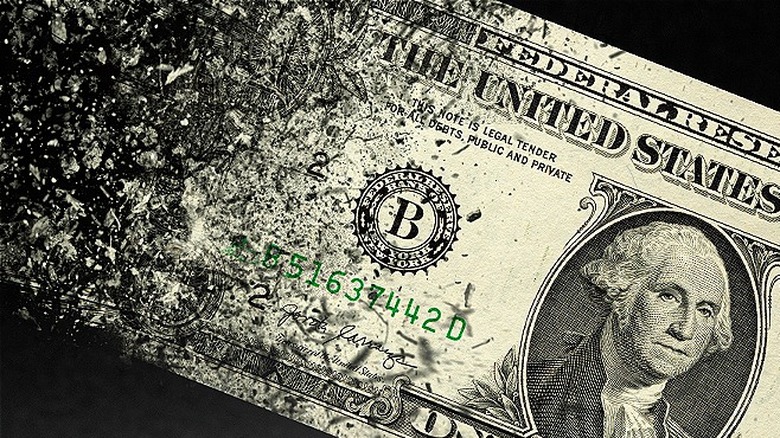Smart Savings Moves To Make With Inflation Still Rising
For many, savings is simply not a top priority in 2024. Between inflation (and subsequent higher prices), housing costs, and the return of student loan debt repayment, many Americans simply don't have enough money leftover every month to devote to savings. In fact, according to a 2023 survey from GoBankingRates, half of Americans reported having less than $500 in their savings, and 36% reported having $100 or less. Meanwhile, polling data from Morning Consult found that the share of Americans who reported they could cover six months' worth of expenses (also known as having a fully funded emergency fund) has been steadily declining since the pandemic.
Despite the Federal Reserve's attempts to curb inflation and keep it below 2%, Americans are still experiencing relatively high prices across the board. As of March 2024, the U.S. inflation rate was 3.5%, which might sound manageable, except for the fact that's only one small piece of a larger price puzzle. The total inflation rate affecting consumer prices rose a staggering 19.6% between January 2020 and January 2024. This means that people are paying $20 additional dollars for the same $100 worth of goods they would have purchased in 2020. This has made the idea of savings even more difficult for workers with stagnant wages, or whose pay increases haven't outpaced inflation. With the new reality of ongoing inflation, it's simply not enough to only save money anymore. Without earning money on existing savings, you're actually losing money through the loss of purchasing power.
Understanding purchasing power
One of the most important things you can keep in mind when saving money is your purchasing (or buying) power. Purchasing power is essentially the amount of a good or service that a single unit of currency can buy. This amount can and does change depending on the specific time you're trying to buy, and a lot of that fluctuation has to do with inflation. Inflation can erode the overall purchasing power of a currency, and this is how your money could lose its value if it's sitting in a static low- or no-interest-earning account while inflation continues to rise. One good way to monitor purchasing power is to compare the price of a specific good against the Bureau of Labor Statistics' Consumer Price Index (CPI, which monitors the changing consumers prices).
It's also important to realize that a loss in purchasing power is equivalent to an increase in prices. Since your money isn't worth as much as it was before, you'll have to spend more to buy the same amount of a good or service as you did in the past. This is why simply saving money isn't enough in the current economic climate. Without a way to increase your savings amount (via interest earnings) you're effectively losing money on your savings instead. Having a high-interest-earning savings plan is now necessary if you hope to keep the value of your savings, let alone help it grow. Specifically, having an interest rate that is higher than the current rate of inflation.
Ways to save more money
While it can be difficult to feel like you have "extra" money these days to devote to savings, there are ways you can help grow the savings you already have (and that means avoiding the worst places to keep your savings). For starters, researching high-yield savings and checking accounts can be an easy and low-risk way to combat inflation. Checking and savings accounts typically have an annual percentage yield (APY) attached to the account. This is the interest rate you will earn on whatever amount you keep in that account.
Note, most big banks offer very low (bordering on nonexistent) APY rates for their accounts. For example, Chase, Bank of America, Wells Fargo, and U.S. Bank all offer a 0.01% interest rate on their savings accounts. Plus, according to the April 2024 FDIC Monthly Cap Report, the average APY rate for savings accounts in the United States is 0.46%, while the average checking account APY is 0.08%. Looking into banks that offer customers high APY rates for checking and/or savings accounts can be an easy way to ensure your money grows while being parked in an account.
Another potential option for helping your savings outpace inflation is to look into certificates of deposits, aka CDs. Specifically, looking into short-term CDs can help you earn higher interest rates without having the inconvenience of your money being tied up for extended periods of time. Many top CDs offer over 5% interest, and since they're FDIC-insured (up to $250,000), your money is safer than more risky investments might be.


